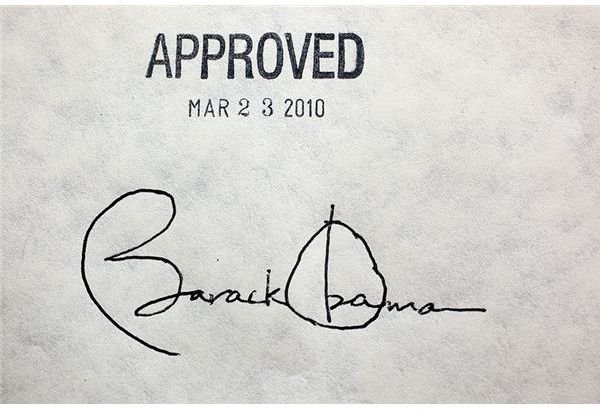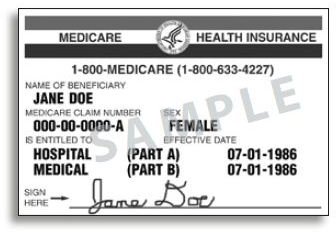In Focus: The Affordable Health Care for America Act - Highlights of Health Insurance Reform
What is the Affordable Health Care Act?
The Affordable Health Care Act is the final amendment to the initial comprehensive health care reform law enacted in March 2010; subsequent amendments to this were entitled the Patient Protection and Affordable Care Act signed into law last March 23, 2010, and the Health Care and Education Reconciliation Act. The final amendment is simply called The Affordable Health Care Act which provides the finishing touches to the reforms implemented in the health care insurance system of America.
Hence others prefer to call it the Affordable Healthcare for America Act because it specifically addresses the ill practices in the American insurance industry that deprive citizens of their entitlement to proper health services. The annually rising costs and the unfair terms and conditions of health care policies are said to be the root causes why the majority of the US population does not have health care coverage plans.
Find, below, overviews of some of the significant reforms that aim to make health care insurance more accessible and affordable, especially to those who were formerly underserved by the insurance industry:
Reforms in the Health Insurance System:

-
Providers of health insurance will no longer have the right to deny health care coverage or charge incredulously high premiums or exclude health care benefits to individuals with pre-existing conditions and disabilities, including children of existing policy holders.
-
However, the alternative to those with pre-existing medical conditions will be their inclusion under high-risk coverage. It is important that those buying into this kind of plan have had no insurance coverage for the past six months, immediately preceding the enrollment for high-risk plans. The law allows insurance companies to charge older people as much as four times that being charged for younger individuals. This particular provision can be administered by the states if there are no insurance providers to offer high-risk assurances.
-
Contracts of policy holders who suffer from injuries or acquire adverse health conditions will no longer be rescinded or barred from renewal or be imposed with limitations for health care benefits.
-
In fact limitations or caps are prohibited and will be considered as outright violations of an individual’s right to health care benefits.
-
Workers who have children below 26 years old can still include children who remain dependent on their parents for as long as the worker’s policy includes coverage for dependents. This is provided that the child referred to who is below 26 years old does not have his own job-based health care plans.
-
By the year 2014, those whose income is less than the national average income for a family of four, which is estimated at around $88,000 per annum, and whose employer does not provide affordable health care coverage can apply for tax credits as financial assistance for self-financed individual insurance coverage.
-
The Exchange, or the Health Insurance Exchange, is a market place where small businesses and individuals can purchase affordable and adequate health benefit plans and where plans offered will tailor-fit the worker’s and his family’s health care needs. These Exchange markets will be established in 48 US states plus the District of Columbia; each state will receive $1 million each as grant funds to develop, build, administer, and run these market places for affordable health care coverage. To learn more details, you can read a comprehensive fact sheet about the Health Insurance Exchange here.
-
In accordance with the Affordable Care Act, insurance companies will no longer impose rules about limiting the choice of primary care doctors, particularly pediatrician and OB-GYN, to the professionals working in the insurance providers’ network. Holders of insurance health plans are now entitled to choose their primary care professionals and be entitled to the same benefits as those who make use of the insurance companies’ network of accredited medical service providers.
-
Every US state has been directed to review the insurance premiums being charged by insurance companies to curtail unfounded and unreasonable annual insurance premium hikes. This way, insurance coverage will be affordable and accessible to working families and to small-scale employers.
-
Insurance providers are now required to use 80% to 85% of the premiums collected from their policy holders as direct health care costs to benefit the insured, while a limit has been imposed by this act over the overhead costs spent by insurance companies as salaries, bonuses, and benefits of insurance executives.
Availability of Home- and Community-Based Services

In order to address the needs of individuals suffering from chronic illnesses as well as those with disabilities, the Affordable Health Care for America Act aims to establish by 2014 several health care facilities dedicated for these underserved sectors of American communities. This finally ends the stoic attitude of the insurance industry toward individuals who are in real need of health care assistance. Find below brief descriptions of these home- and community-based services soon to be established through the provision enacted under the recently approved Affordable Health Care for America Act:
CLASS-Community Living Assistance Services and Supports
This is a national voluntary insurance program open to all individuals who have functional limitations, similar to but different from Medicaid. Although the government intends this program to be self-sustaining, it does not require its members to belong to the below-poverty level in order to be served. The program aims to make individuals self-sufficient in providing for their health care needs by becoming voluntary members enrolled in a policy plan with a five-year duration at the least. Premium payments may be effected through voluntary payroll deductions and will entitle the member to receive health care benefits and services at an equivalent amount of $50 per day.
Community-Based Options for US States Serving Eligible Medicaid Recipients
Community First Choice Option - The program will allow state-run Medicaid facilities to provide their Medicaid recipients with home-based care as an alternative to putting them under institutional care in nursing homes.
Money Follows the Person - State-administered grants to defray the cost of transferring Medicaid recipients confined as inpatients in facilities to community-based Medicaid centers.
Alternatives to COBRA Coverage
HIPAA Eligibility for Guaranteed Individual Coverage
Individuals who have lost their employer-sponsored health care insurance including those who are seeking alternatives to their COBRA coverage, and who are considered as HIPAA eligible, can have affordable health care alternatives based on individual plans. HIPAA stands for the Health Insurance Portability and Accountability Act of 1996 in which the use of medical savings accounts was promoted as employees’ protection against the loss of insurance coverage due to job loss or job transfers.
This law guarantees the rights of individuals to obtain adequate health care coverage, as it was the first to impose a ban on the unfair practice of excluding individuals with pre-existing conditions from health care services. Those who have extended their COBRA coverage must first exhaust their plans but can now apply for HIPAA eligibility even before the COBRA coverage is exhausted to insure continuity of health care benefits. In addition, those who are HIPAA-eligible and who will acquire guaranteed individual plans will no longer be qualified to become Medicaid or Medicare recipients or other health coverage programs of the state.
The Health Coverage Tax Credit (HCTC)
This tax credit pays for 80% of qualified health insurance premiums of HCTC eligible workers. The basic eligibility requirements to become HCTC-qualified are those entitled to receive Trade Adjust Assistance (TAA) benefits or those receiving pension funds from the Pension Benefit Guaranty Corporation (PBGC), plus other general requirements including that of having an existing and qualified health plan.
For more information about this health care option, visit the IRS webpage for HCTC: Eligibility Requirements and How to Receive the HCTC.
Alternatives to COBRA Coverage
Special Enrollment Opportunities
These opportunities are allowed in the following cases:
-
If a spouse previously turned down her membership under the employer-sponsored group coverage in her workplace due to already-existing group coverage of a husband, the spouse has the subsequent chance to join the said group coverage in case the husband loses his job and his employer-sponsored group health plan.
-
The husband or individuals related by birth, marriage, adoption, or placement can have the option to elect membership to the spouse’s or the adoptive parent/child’s employer-sponsored group health insurance.
-
In both conditions, the displaced employee should notify the company of his request within 30 days after losing his group insurance coverage due to a life event like involuntary termination.
The Small Business Health Care Tax Credits

Whereas before workers could expect employer-sponsored health care insurance coverage only from large scale companies, the recently approved Affordable Health Care for America Act, through the IRS, will make affordable health care insurance possible for workers employed by even small business operators.
Employers who have at least 25 full-time workers and pay average annual wages of $50,000, regardless if they are tax exempt or taxed for profit, are offered tax credits for providing health insurance coverage for their workers.
The maximum amount of the tax credit is up to 35% percent of the premium costs shouldered by small businesses and can increase up to 50%. Business owners who are interested in getting more information on how they can qualify for this tax incentive may visit the IRS webpage “IRS Offers Details on New Small Business Health Care Tax Credit."
There are many more reforms, changes, and additions promulgated by the Affordable Health Care for America Act, including a long list of mandatory inclusions in health care policies. Examples of these include but are not limited to: ambulatory and emergency patient services, hospitalization, maternity and newborn care, laboratory, and preventive and wellness services, just to mention a few. Get the details from this webpage: Fact Sheet: The Affordable Care Act’s New Patient’s Bill of Rights.
Reference Materials and Image Credit Section
Reference Materials :
- Your Health Care Explained – https://www.healthcare.gov/
Image Credits:
